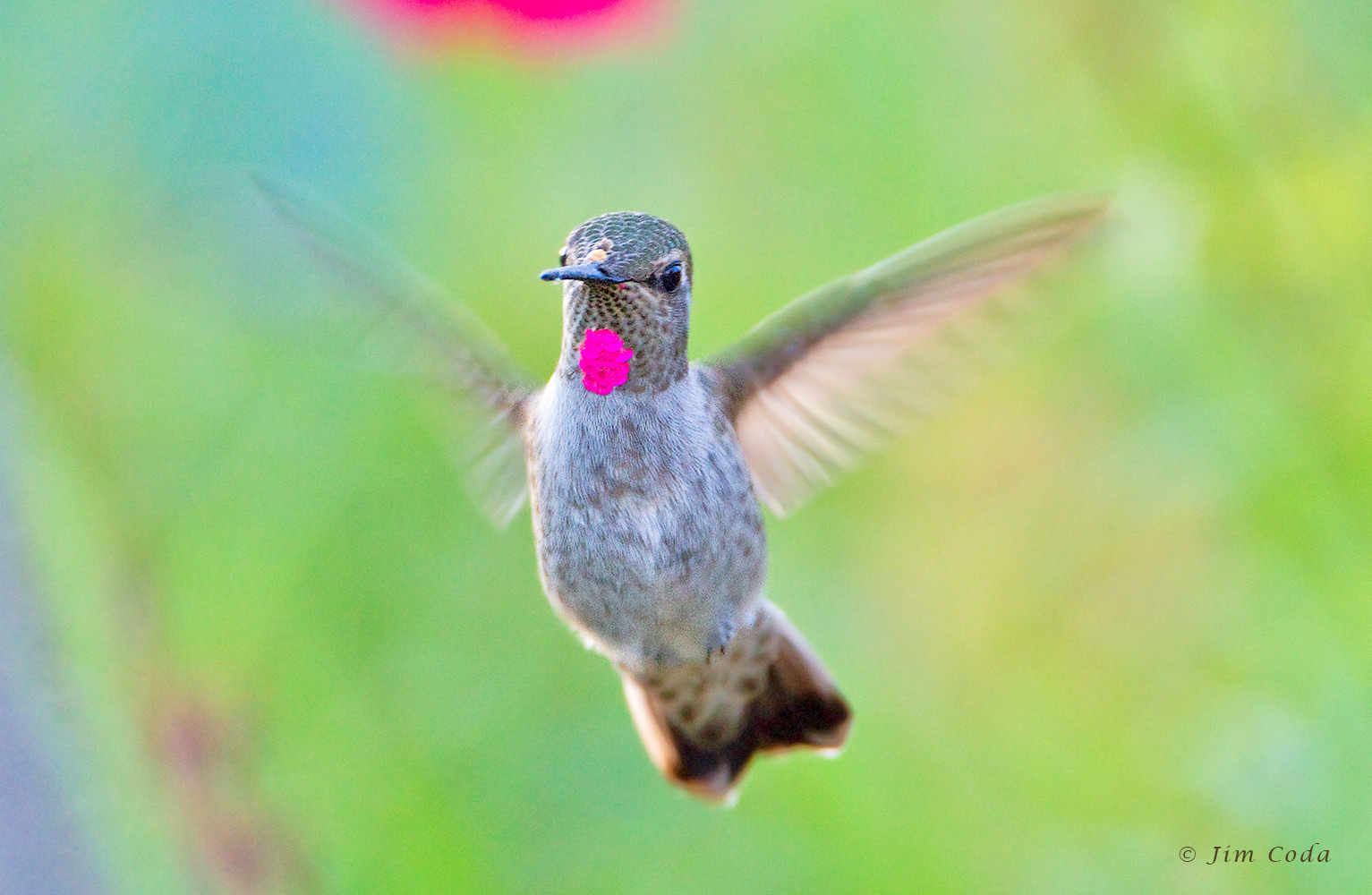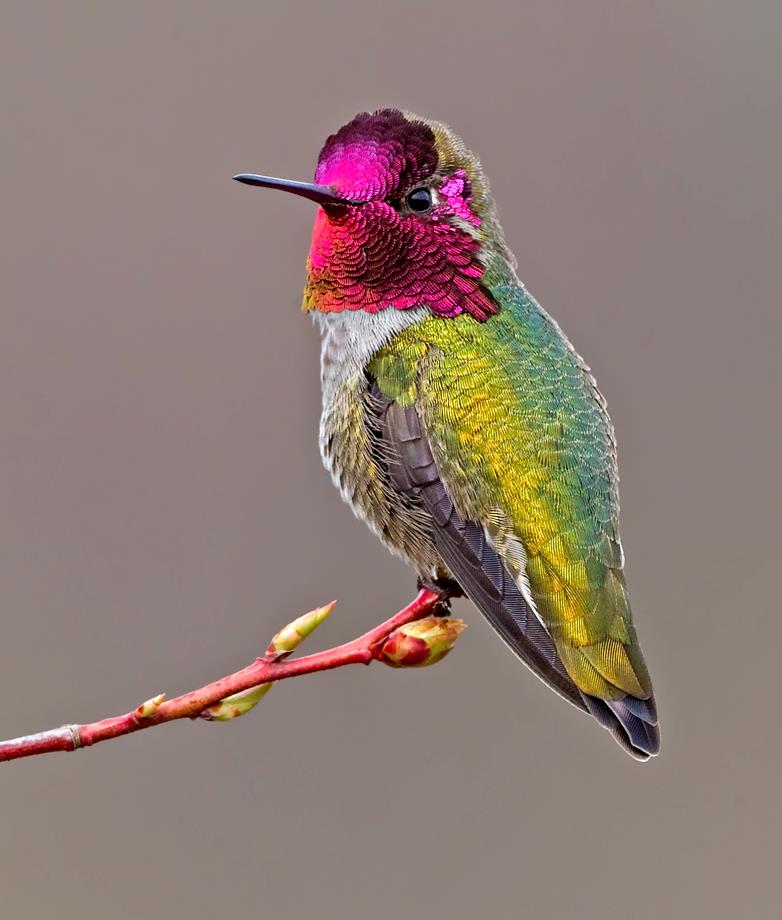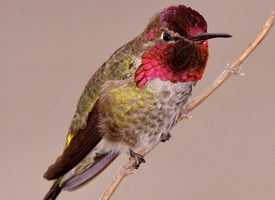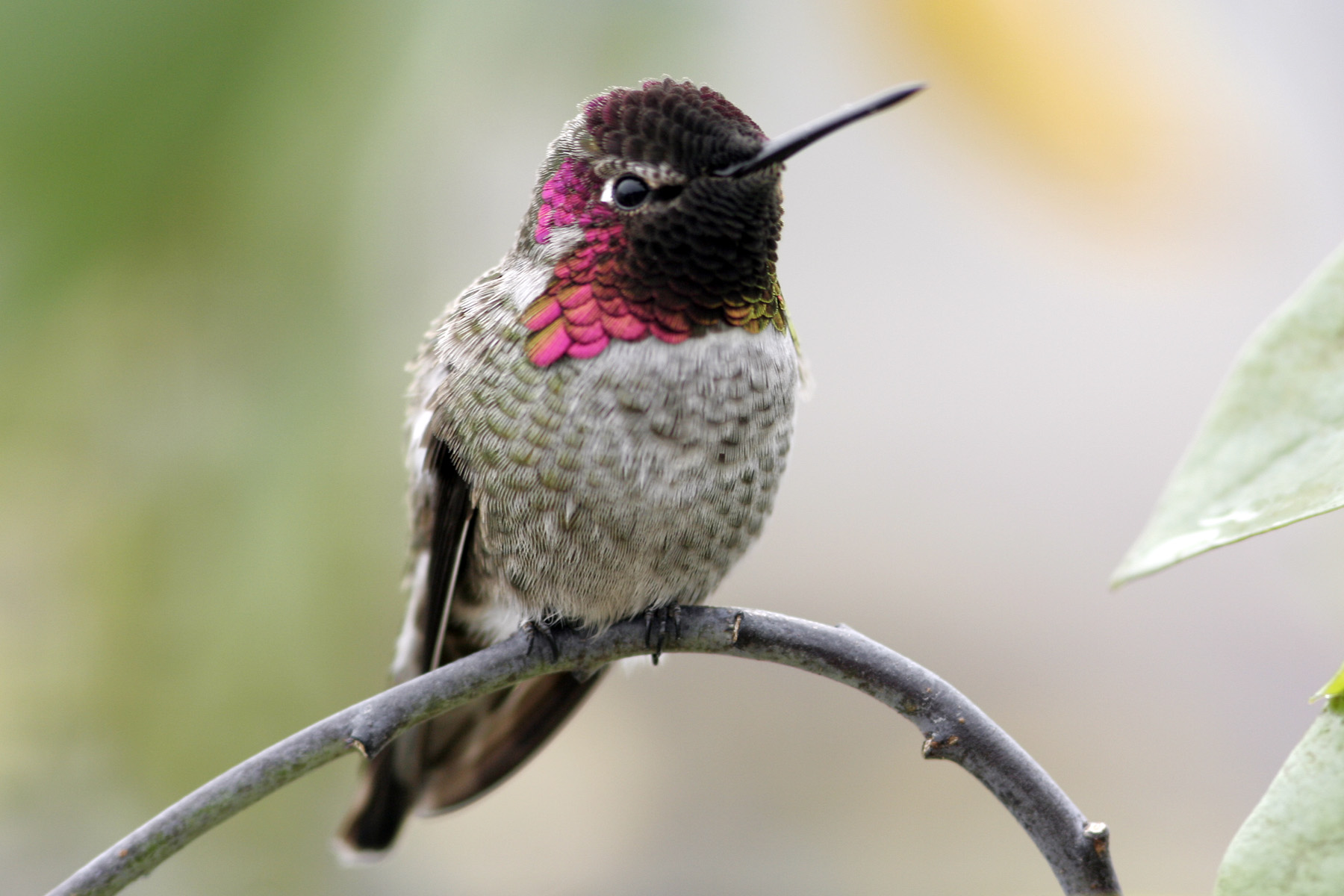
Calypte anna
SUBFAMILY
Trochilinae
TAXONOMY
Ornismya anna Lesson, 1829, San Francisco, California. Monotypic.
OTHER COMMON NAMES
French: Colibri d’Anna; German: Annakolibri; Spanish: Colibrн
de Ana.
PHYSICAL CHARACTERISTICS
3.9–4.3 in (10–11 cm); female 0.12–0.17 oz (3.3–4.7 g), male
0.12–0.2 oz (3.3–5.8 g). Male has short, straight black bill; upperparts
golden green; head and elongated lateral throat feathers
iridescent deep rose red, underparts gray washed with green,
undertail-coverts green, edged gray; central rectrices golden
green, lateral tail feathers dark greenish bronze. Female similar
to male, head grayish, small white postocular spot, lacks iridescent
rose red on head and throat, red discs on throat appear
with age; median rectrices golden green, rest blackish, outermost
feathers tipped white. Immatures similar to adult females.
DISTRIBUTION
Southwest Canada (British Columbia) through west United
States (east to south Arizona) to northwest Mexico. Winter range
highly unsettled, species occuring irregularly south to north
Sonora, southeast to Gulf Coast of United States, and even north
to southeastern Alaska; sporadically occurs much further east.
HABITAT
Chaparral, oak woodland, canyon bottoms, open woodland
with evergreen broadleaf trees, riparian woodland, savanna-like
vegetation, coastal shrub, and urban and suburban environments,
at sea-level to 5,900 ft (1,800 m).
BEHAVIOR
Forages in low to high strata, usually at 6.6–26 ft (2–8 m).
Male occupies feeding territories at nectar-rich sources. Extensive
post-breeding wandering. In recent years the species has
considerably expanded its range of winter occurence in the
United States towards the southeast. Recently recorded for
first time in San Luis Potosн (north-central Mexico).
FEEDING ECOLOGY AND DIET
Nectar of flowering native and introduced perennials, shrubs
and trees including Ribes, Diplacus, Salvia, Keckiella, Aquilegia,
Mimulus, Tecomaria, Kniphofia, Agave, and Eucalyptus. Insects
are caught in the air by hawking or taken from foliage. Small
flies constitute almost half of the arthropod consumption.
REPRODUCTIVE BIOLOGY
Breeding occurs from November to May, occasionally to July.
Cup-shaped nest constructed of soft material such as plant
down, feathers, and hair, held together by spider web and insect
cocoon fibers and sometimes rodent hairs; decorated with
lichen, moss, pieces of dead leaves and bark on external wall;
placed on horizontal twigs, usually 6.6–20 ft (2–6 m), sometimes
up to 65 ft (20 m) above ground. Two eggs; incubation
14–19 days by female. Chicks black with two dorsal rows of
dull grayish down; fledging period 18–26 days.
CONSERVATION STATUS
Common throughout range and at present apparently in
process of expansion.
SIGNIFICANCE TO HUMANS
None known.
Other popular Animals
Photo Gallery of - Anna’s hummingbird




 Animalia Life
Animalia Life